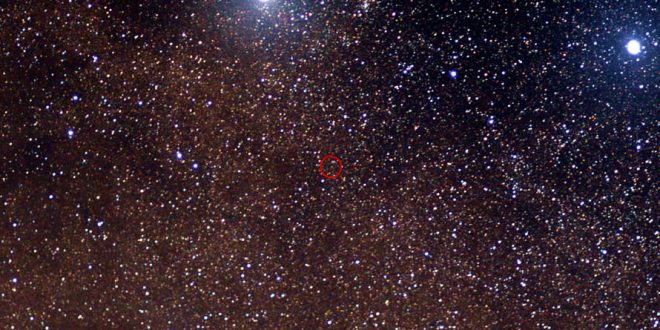$100 million research and engineering program will seek proof of concept for using light beam to propel gram-scale ‘nanocraft’ to 20 percent of light speed. A possible fly-by mission could reach Alpha Centauri within about 20 years of its launch.
Internet investor and science philanthropist Yuri Milner was joined at One World Observatory by renowned cosmologist Stephen Hawking to announce a new Breakthrough Initiative focusing on space exploration and the search for life in the Universe.
The research and engineering programming would send images of possible planets and other scientific data from space. Former NASA Ames Research Center Director Pete Worden is leading the effort.
The Alpha Centauri star system is 25 trillion miles or 4.37 light-years away. That’s obviously very far, which makes sending people there hard. It would take 30,000 years, said Milner in an interview. Thus, tiny rockets!
The solution, he said, was “gram-scale nanocraft, on a sail pushed by a light beam” that can fly more than a thousand times faster.
“It is a Silicon Valley approach to space travel,” said Milner, who said the price of launches could be just a few hundred thousand dollars compared to the astronomical prices of today.
It’s yet another of Milner’s recent moonshot efforts. A year ago, he announced a related $100 million effort to discover whether intelligent life exists in the cosmos, along with Hawking.
Named after Milner’s series of science prizes, that 10-year project will use open data and software, along with two powerful telescopes, to scan the sky in hopes of receiving signals from others who might be out there.
Starshot is the sending-probes part of the equation. And there are really cool-sounding technologies like Lightsail (teeny sails), StarChip (a powerful gram-scale wafer) and Light Beamer (lasers!).
Silicon Valley’s interest in space has gained traction over the years, with a myriad of investments in all kinds of satellites and rocket technology. The most famous effort has been from Elon Musk, whose SpaceX is trying to privatize space, and he recently launched and landed a spacecraft back on earth. Musk himself has said he hopes to someday colonize Mars.
Agencies/Canadajournal
 Canada Journal – News of the World Articles and videos to bring you the biggest Canadian news stories from across the country every day
Canada Journal – News of the World Articles and videos to bring you the biggest Canadian news stories from across the country every day



